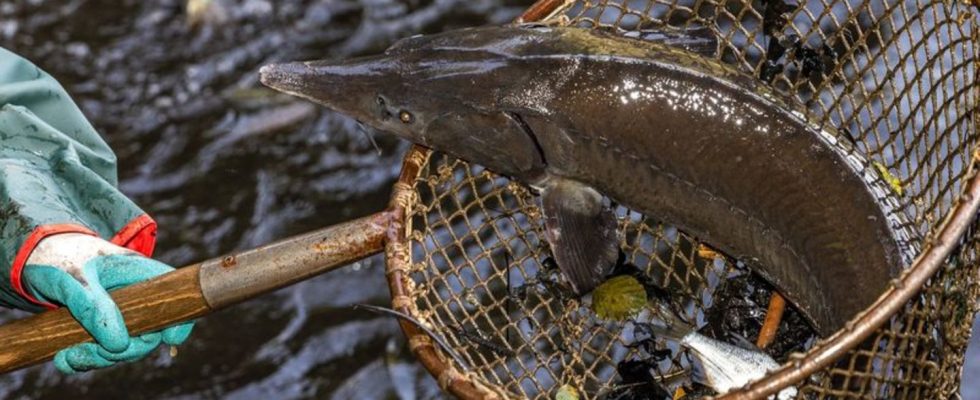Eat Drink
Sturgeon and caviar: Study shows often illegal origin
A sturgeon fidgets in the landing net. (archive image) photo
© Frank Hammerschmidt/dpa
Sturgeons are under strict protection. However, the regulations often seem to take a back seat to commercial and culinary interests, as a study shows.
The observed intensity of poaching undermines any protection efforts, writes the team of authors led by Arne Ludwig from the Leibniz Institute for Zoo and Wildlife Research in Berlin in the journal “Current Biology”. The trade in caviar and sturgeon urgently needs to be improved in order to secure the future of the stocks.
Caviar is the name given to the eggs of various species of sturgeon, which are caught in the Black Sea and the Caspian Sea, among others. The high price and persistent demand have brought many of the species to the brink of extinction. Caviar is usually obtained by slaughtering the sturgeon.
21 percent originate in the wild
To check the origin, the team obtained samples from various sources, such as trade and gastronomy, in Bulgaria, Romania, Serbia and Ukraine. Five samples were confiscated by authorities. Result: Wild sturgeon products were traded in all four countries. The researchers determined that 21 percent of all caviar and sturgeon meat samples originated in the wild. In around eleven percent they believe that existing rules have been violated, for example if the wrong type of sturgeon or the wrong country of origin was specified for caviar. And almost a third are classified as consumer deception.
Even though poaching and illegal wildlife trade are often viewed as a problem in developing countries, the results are evidence that a high proportion of poached sturgeon products come from the EU and candidate countries, the researchers write.
They also report that some of the products were passed off as wild products when they actually came from aquaculture. The results also suggested that there is still demand for wild sturgeon products. This promotes poaching and is an indication that consumers do not accept aquaculture products as a complete replacement. In individual cases, the investigations showed that no trace of the fish could be found in the alleged sturgeon products.
Fishing for sturgeon is prohibited in the Danube
According to the study, sturgeon fishing is prohibited in the Danube due to threatened populations; each individual is important for their survival. Since 1998, all sturgeon species have been protected by the Washington Convention on International Trade in Endangered Wild Animal and Plant Species (CITES), and an international labeling system for caviar products has been intended to counteract illegal trade since 2000.
Today, according to the Berlin Institute, caviar can almost exclusively come from farmed sturgeon. The sale of caviar found in the study, which violates CITES and EU obligations, calls into question the effectiveness of controls in general and the labeling system in particular, said co-author Jutta Jahrl. She is the manager of a sturgeon protection project at WWF Austria, which is also involved in the study. In the study, the team rated the results as “alarming.”

